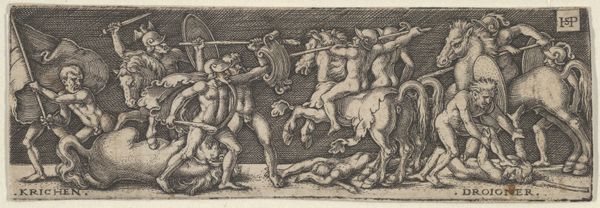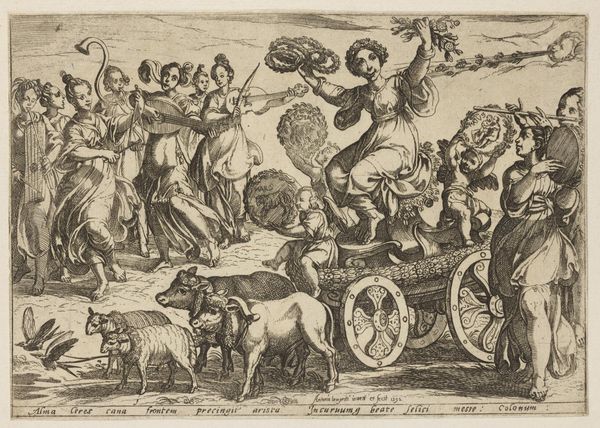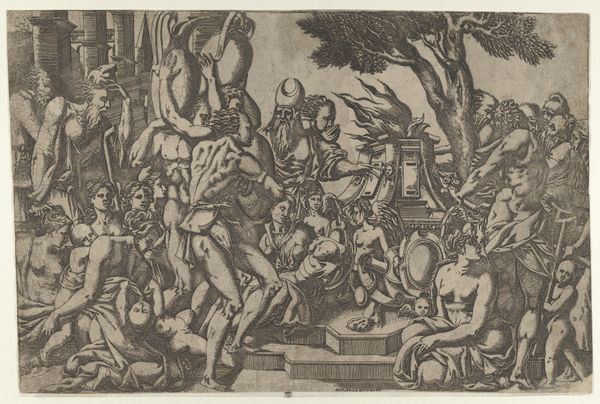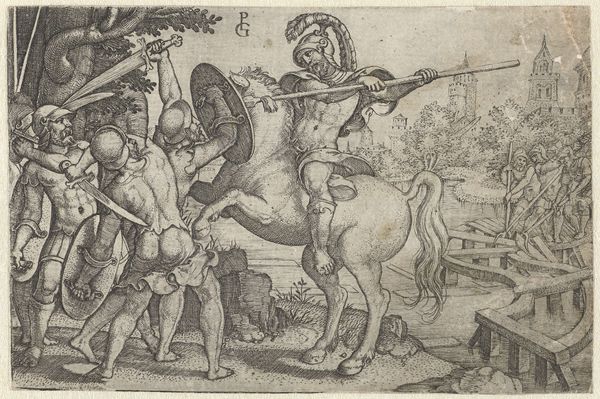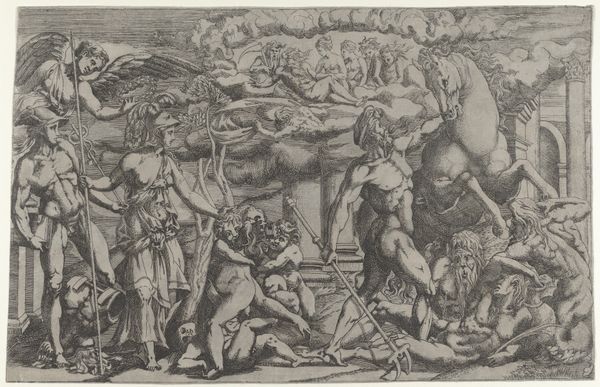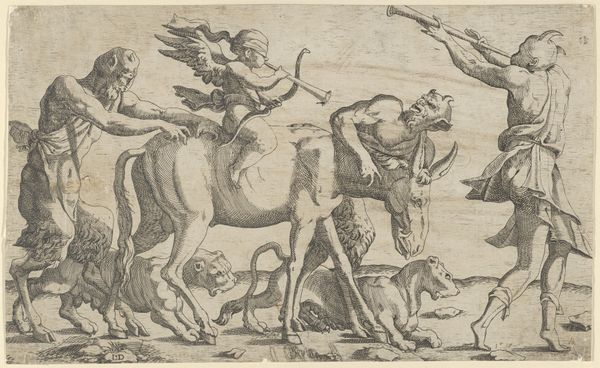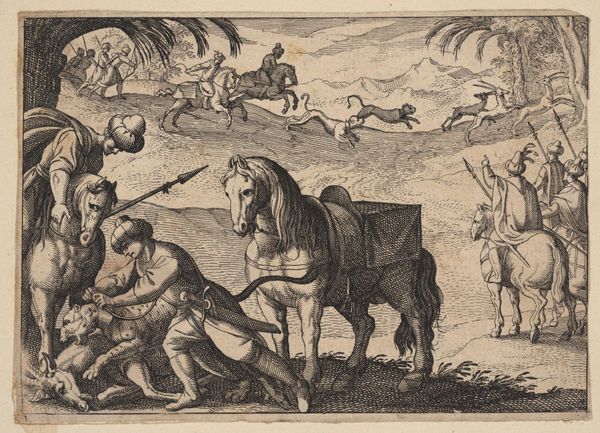
Dimensions: Sheet: 1 1/16 x 3 5/16 in. (2.7 x 8.4 cm)
Copyright: Public Domain
Editor: Here we have Sebald Beham's "Achilles and Hector," an engraving done sometime between 1518 and 1530. It’s incredibly dynamic, packed with figures in combat. What strikes me most is the detail achieved through the engraving process. What do you find most compelling about this piece? Curator: For me, it’s about understanding this print within its historical context, examining its function as a commodity produced through workshop labor. Consider the division: Beham likely designed it, but other hands probably assisted in the actual engraving. Editor: That's interesting. So, you're focusing on it more as an object of production rather than purely artistic expression? Curator: Precisely. It’s not just about individual genius but about the entire system of artistic production at the time. The circulation of such prints democratized access to classical themes but also reinforced a social hierarchy where art-making was a trade, often involving exploitative labor practices. Look closely at the hatching and the burin work - imagine the hours involved. What kind of a market sustains this? Who consumed these prints, and what did they signify to them? Editor: So, beyond the depicted battle, it’s also a record of early Renaissance printmaking as industry. Was this intended to be consumed as fine art, or was it more for educational purposes, illustrating the classics? Curator: Possibly both. These prints had multiple functions – decoration, education, even political propaganda. What the wealthy displayed in their homes versus what a scholar used in study would imply two levels of material use and accessibility. The themes chosen reflect cultural aspirations and values. Editor: I see. So by looking at the "how" and "for whom" of its creation, we reveal so much about the culture it came from, not just its artistic value. Curator: Exactly! By understanding its production, materials, and circulation, we can better grasp the socio-economic factors shaping artistic creation.
Comments
No comments
Be the first to comment and join the conversation on the ultimate creative platform.

